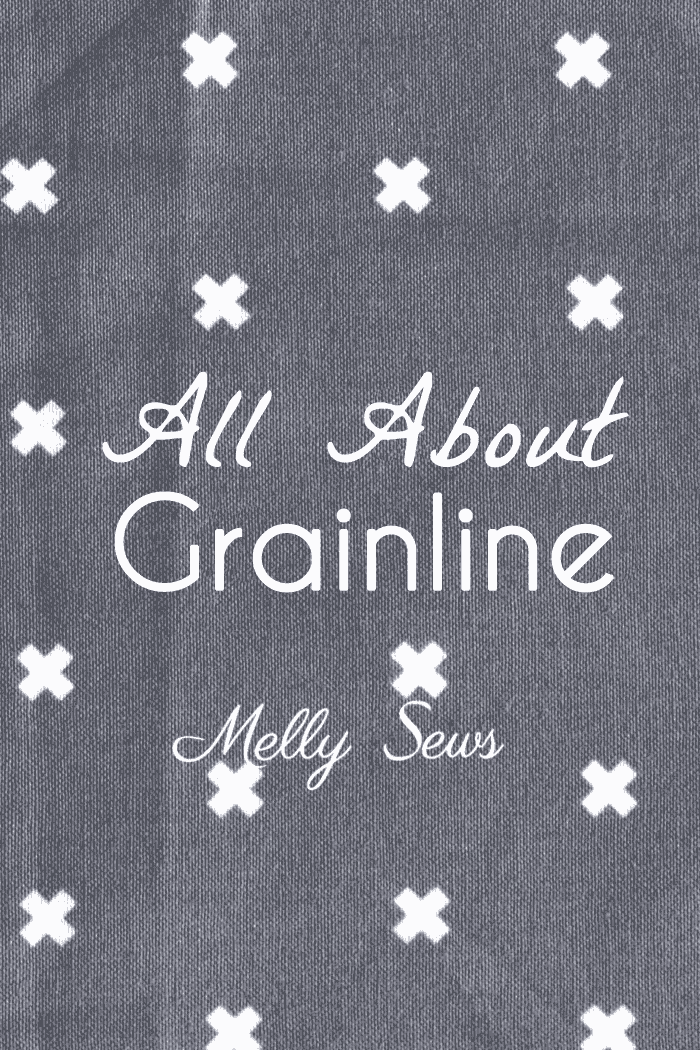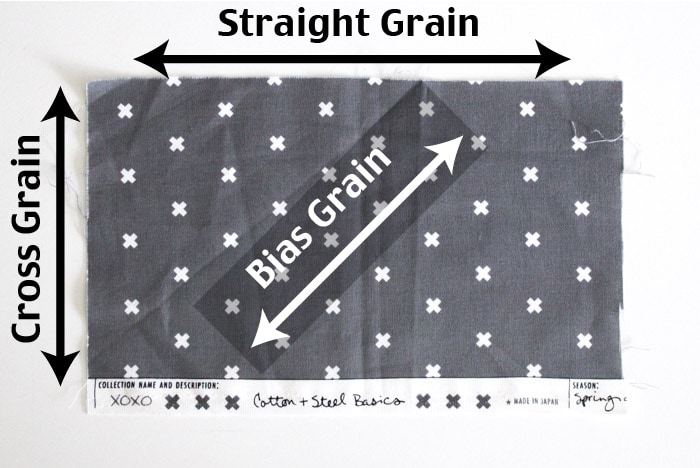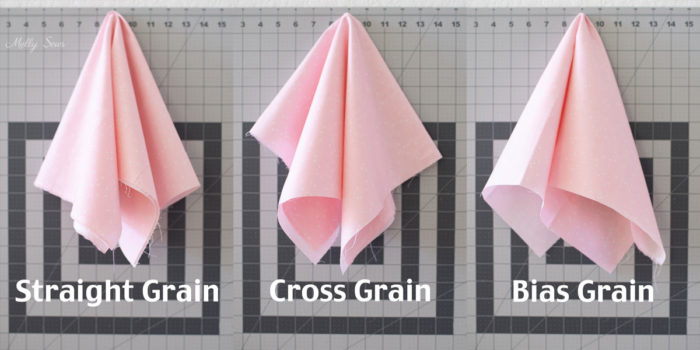All about fabric grain – lengthwise grain, cross grain, bias grain, and why grainline is important in sewing.

Hey y’all, today we’re going to be talking about grain line on fabric. Knowing how to find the fabric grain and why the grainline is important will help make your final garment turn out great. We’ll talk about the differences between the lengthwise grain of the fabric and the crosswise grain and even talk about the diagonal direction.
What is fabric grain?
Fabric grain refers to the direction of the warp and weft threads used in weaving the fabric. Straight grain or lengthwise grain is in the direction of the warp threads, which run parallel to the selvages. These are the long threads of woven fabric that run the entire length of the loom, hence the name lengthwise. Cross grain runs in the direction of the weft threads, which run perpendicular to the selvage edges. These are the shorter threads that run back and forth. Bias grain is at a 45 degree angle from the straight grain.

Another way to think about grain line is to think about fabric on the bolt. The long threads that run the length of the bolt are the straight grain. The short threads that cross the width of the bolt from the selvedge of the fabric to the other selvedge are the cross grain.
Even when all the threads that make up a fabric are the exact same weight and fiber, the process of weaving them and their lengths makes the fabric drape and stretch slightly differently depending on which grainline is running horizontally or vertically. You can see more of that in the video below. I show examples of how fabric behaves differently depending on which grainline you cut your pieces on. You can also watch it on YouTube here.
For more information about knit fabrics, see this post. Grainline doesn’t work the same in knit fabrics because they are constructed differently, so that post talks about how to find the fabric grainline on stretch fabric.
Here’s a picture that also illustrates what I showed on the dress form in the video. These are the differences in how fabric drapes based on whether the straight grain is running vertically, if the cross grain is running vertically, or if the true bias (which is 45 degrees from either the cross or lengthwise grain) is running vertically.

FAQs About Fabric Grain
What if my pattern doesn’t have the grainline marked?
Sewing patterns usually have a long arrow as a marker for the grainline. But what if this isn’t on your pattern, or you drafted something yourself? Generally, in patterns for woven fabrics, you want the straight grain to run vertically down the body, so lay your pattern pieces that way.
Can I cut on the cross grain?
It depends. I often cut pieces on the cross grain to save fabric or because of the way I want a directional print to run. The differences are usually very subtle, so this works well. However, the more fitted a garment is (think formal dresses or jeans) the more important the grainline becomes.
How do I find the grain?
The easiest way is to look at the selvedges and then remember same direction as selvedge is straight grain, perpendicular is cross grain. But how do you determine the fabric grain if your fabric piece is missing selvage edges? You can test the stretch, remembering that fabric has more give on the cross grain. So first look, with a magnifying glass if necessary, at the threads. Maybe even mark the two directions of the threads. Then stretch in the direction of the horizontal threads, and again in the direction of the vertical ones. Whichever way stretches or gives more is your crosswise grain. Once straight and cross grains are established, you can pull a thread along the straight grain as a reference for lining up your pattern pieces.
Side note: I intentionally spelled selvedge two ways in this paragraph, as both are correct spellings, though selvage is the more commonly recognized one in the U.S.

Tia
You explained it so well. Thanks for such a helpful information. I had few misconceptions regarding this topic, which you cleared it all 🙂
Jenus
I agree!
Frances Evans
Great job. Simple and to the point. Thank you for the refresher!
Lara
Excellent! Very well described and love the demonstrations! Thank you!
Tab
Great subject! This is what drives me nuts about ready-made clothing. It can be difficult to find affordable store-bought t-shirts, for example, that were cut on the grain. After one wash, you end up with a crazy hang!
meg
if only the closing manufactures knew the effect of the grain direct then clothes would be better!
this is really helpful! thank you!
Virginia
this was great information. I had always been confused when I came across this topic. I know better now. Thank you so much.
Jenus
Great info! Thank you for sharing!
Ashley
This was really helpful and i appreciate you not making it so complicated that it’s intimidating. Happy sewing, Im ready to get started. Thank you
Karen Gotcher
Excellent explanation!! I wish we would have learned this in Home Ec so many years ago! They taught us how to pull a thread but never explained it like this that I remember! Thank you!
Ann
Thanks! This was very helpful!